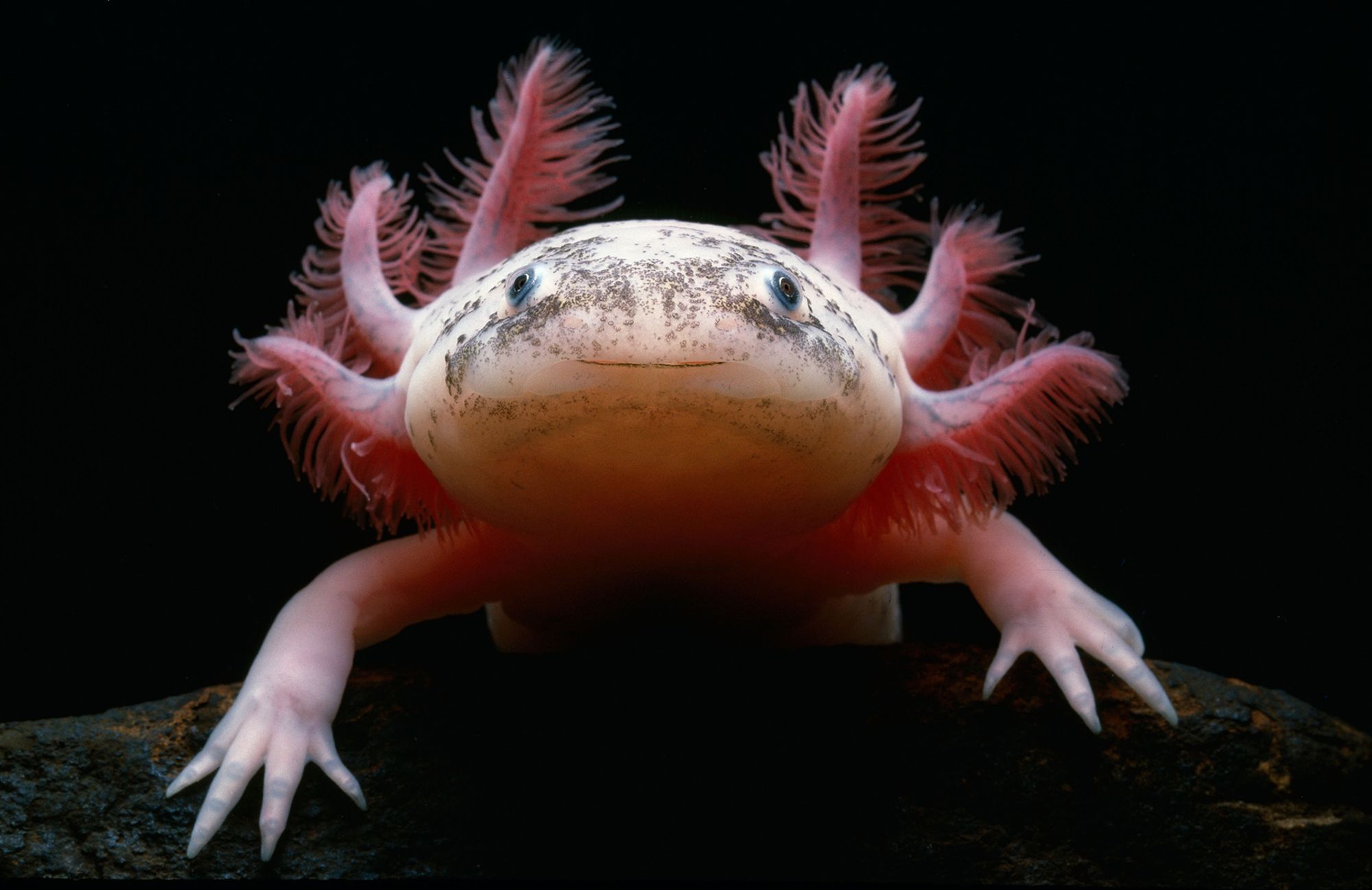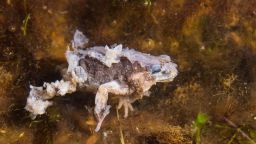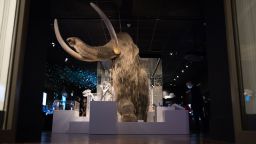Sign up for CNN’s Wonder Theory science newsletter. Explore the universe with news on fascinating discoveries, scientific advancements and more.
Scientist Dr. Randal Voss gets the occasional reminder that he’s working with a kind of superstar. When he does outreach events with his laboratory, he encounters people who are keen to meet his research subjects: aquatic salamanders called axolotls.
The amphibians’ fans tell Voss that they know the animals from the internet, or from caricatures or stuffed animals, exclaiming, “‘They’re so adorable, we love them,’” said Voss, a professor of neuroscience at the University of Kentucky College of Medicine. “People are drawn to them.”
Take one look at an axolotl, and it’s easy to see why it’s so popular. With their wide eyes, upturned mouths and pastel pink coloring, axolotls look cheerful and vaguely Muppet-like.
They’ve skyrocketed in pop culture fame, in part thanks to the addition of axolotls to the video game Minecraft in 2021. These unusual salamanders are now found everywhere from Girl Scout patches to hot water bottles. But there’s more to axolotls than meets the eye: Their story is one of scientific discovery, exploitation of the natural world, and the work to rebuild humans’ connection with nature.
A scientific mystery
Axolotl is a word from Nahuatl, the Indigenous Mexican language spoken by the Aztecs and an estimated 1.5 million people today. The animals are named for the Aztec god Xolotl, who was said to transform into a salamander. The original Nahuatl pronunciation is “AH-show-LOAT”; in English, “ACK-suh-LAHT-uhl” is commonly used.
Axolotls are members of a class of animals called amphibians, which also includes frogs. Amphibians lay their jelly-like eggs in water, and the eggs hatch into water-dwelling larval states. (In frogs, these larvae are called tadpoles.)
Most amphibians, once they reach adulthood, are able to move to land. Since they breathe, in part, by absorbing oxygen through their moist skin, they tend to stay near water.
Axolotls, however, never complete the metamorphosis to a land-dwelling adult form and spend their whole lives in the water.
“They maintain their juvenile look throughout the course of their life,” Voss said. “They’re teenagers, at least in appearance, until they die.”
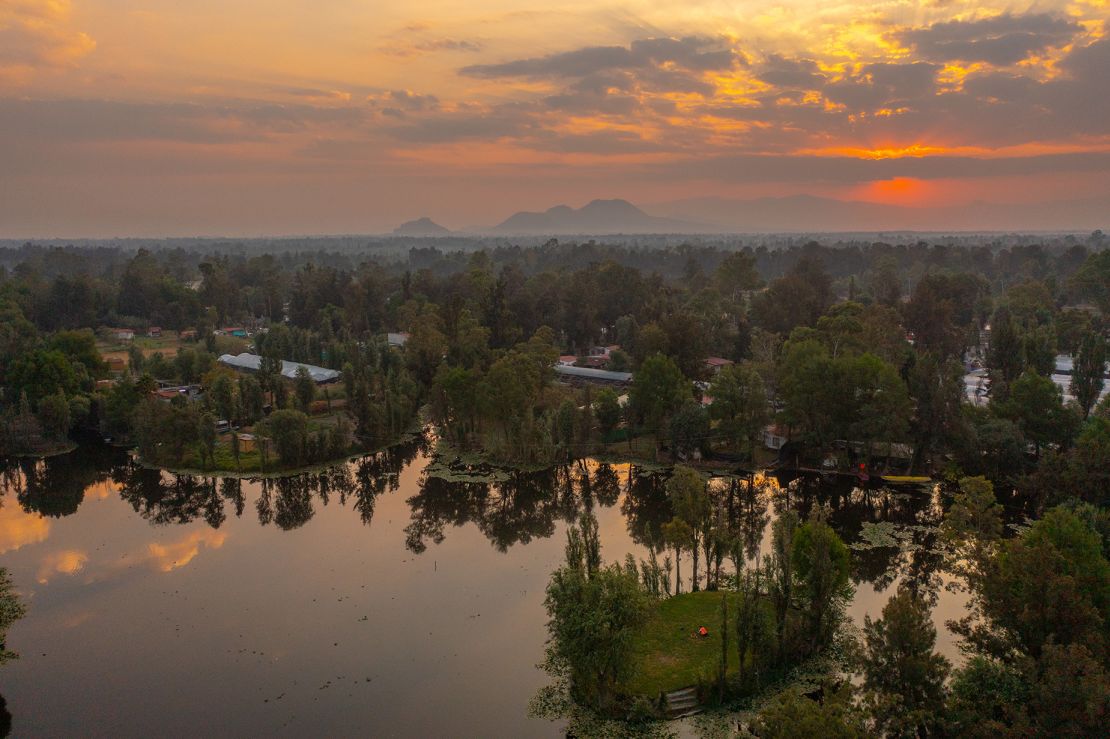
A signature feature of the axolotls’ forever-young look is their frilled external gills, which help them breathe in their watery home — the only spot they’re found in the wild: Lake Xochimilco in Mexico City.
It’s a bit of a scientific mystery why axolotls don’t transform into adult, land-dwelling versions of themselves. One hypothesis, according to Dr. Luis Zambrano, a professor of zoology at the National Autonomous University of Mexico, is that the environment in Lake Xochimilco had enough resources for the salamanders that “it was by far better for them not to expend energy transforming and stay in the lake.”
The 10-square-mile Lake Xochimilco is a unique body of water, a natural drainage basin with slightly salty water. More than 1,000 years ago, Xochimilca people in the region invented an agricultural system of human-made floating islands called chinampas. The chinampa system, with its drainage canals surrounding the islands, is still used by farmers called chinamperos today. The islands provided habitats and hiding places for the axolotls, which thrived among the chinampas for 1,000 years.
However, the chinampas of Lake Xochimilco are no longer thriving, and neither are the salamanders. “The problems started at the beginning of the last century,” Zambrano said.
Axolotl problems
As Mexico City grew and became more industrialized, the need for water brought pumps and pipes to the lake, and eventually, “it was like a bad, smelly pond with rotten water,” Zambrano said. “All of our aquatic animals suffer with bad water quality, but amphibians suffer more because they have to breathe with the skin.”
To add to the axolotls’ problems, invasive fish species such as carp and tilapia were introduced to the lake, where they feed on axolotl eggs. And a 1985 earthquake in Mexico City displaced thousands of people, who found new homes in the area around the lake, further contributing to the destruction of the axolotls’ habitat.
These combined threats have devastated axolotl populations. According to the International Union for Conservation of Nature, there are fewer than 100 adult axolotls left in the wild. The species is considered critically endangered.
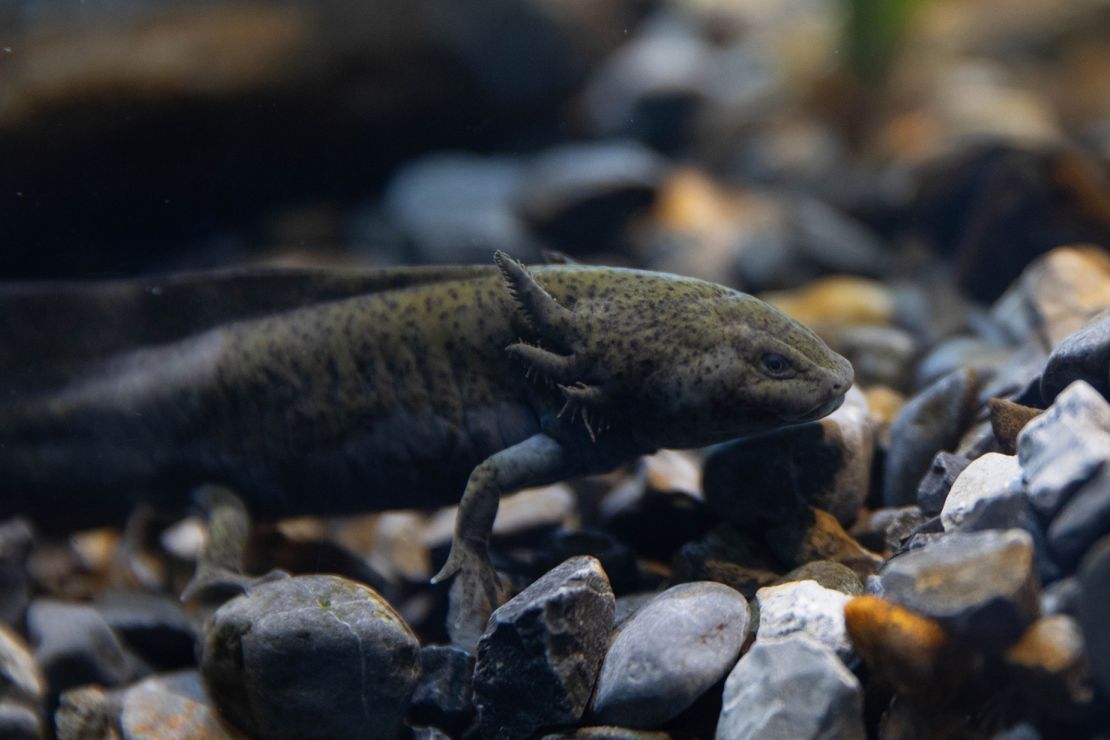
While the wild axolotls of Lake Xochimilco have dwindled to near-extinction, countless axolotls have been bred for scientific laboratories and the pet trade. “The axolotl essentially helped establish the field of experimental zoology,” Voss said.
In 1864, a French army officer brought live axolotls back to Europe, where scientists were surprised to learn that the seemingly juvenile aquatic salamanders were capable of reproduction. Since then, scientists around the world have studied axolotls and their DNA to learn about the salamanders’ unusual metamorphosis (or lack thereof) as well as their ability to regrow injured body parts.
In addition to their role in labs, axolotls have become popular in the exotic pet trade (though they are illegal to own in California, Maine, New Jersey and Washington, DC). However, the axolotls you might find at a pet shop are different from their wild relatives in Lake Xochimilco. Most wild axolotls are a dark grayish brown. The famous pink axolotls, as well as other color variants such as white, blue, yellow and black, are genetic anomalies that are rare in the wild but selectively bred for in the pet trade.
What’s more, “most of the animals in the pet trade have a very small genetic variance,” Zambrano said. Pet axolotls tend to be inbred and lack the wide flow of different genes that makes up a healthy population in the wild. That means that the axolotl extinction crisis can’t simply be solved by dumping pet axolotls into Lake Xochimilco. (Plus, the pet axolotls likely wouldn’t fare well with the poor habitat conditions in the lake.)
Fame and misfortune
The difficulties that axolotls face in the wild are almost diametrically opposed to the fame they’ve found in recent years. Axolotls have captured the human imagination for centuries, as evidenced by their roles in Aztec religion and stories, but the early 21st century seems to be a high point for them. An axolotl graces the 50 peso bill. There are axolotl-inspired Pokemon, and Reddit commenters have noted that the character Toothless from the “How to Train Your Dragon” movie series is distinctly axolotl-like.
The introduction of axolotls to Minecraft in 2021 neatly mapped onto an uptick in Google searches for the animals, and social media makes it easy for people to gain access to photos and videos of the salamanders, particularly the photogenic pink ones often kept as pets.
The axolotl pet trade probably doesn’t directly harm the wild populations since wild salamanders aren’t being poached or taken from Lake Xochimilco. However, Zambrano said, axolotls’ ubiquity in pop culture and pet stores might make people assume that because axolotls “live in all the tanks around the world, they are not in danger.”
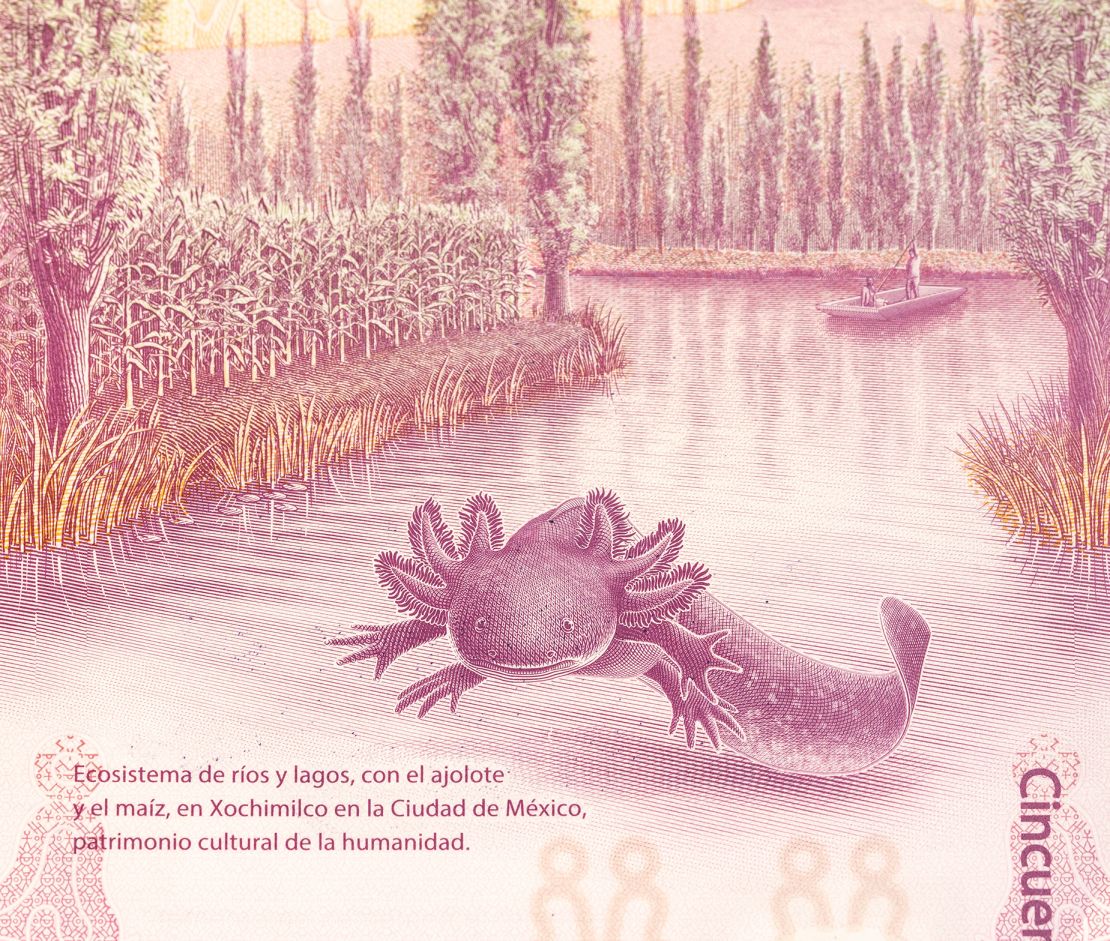
Zambrano has been working in axolotl conservation for more than two decades. It’s a somewhat unusual challenge, he said, because axolotls live so closely to so many people, so the answer to saving them isn’t simply to create a wildlife preserve and keep people out.
“We have to be inventive in terms of the new ways of restoration and resilience and sustainable decisions,” he said.
These new practices include outreach efforts that aim for “synergy between local knowledge and scientific knowledge,” Zambrano said, especially among the chinamperos whose families have farmed the islands in Lake Xochimilco for generations.
A widespread return to the chinampa system, he said, would benefit the axolotls, because it would ensure cleaner habitat space for the salamanders than the lake’s current, more industrial uses provide.
Such efforts would require policy changes, but according to Zambrano, worldwide enthusiasm for the axolotls could bolster such a campaign. People who love them can even symbolically adopt an axolotl to help fund conservation programs. Getting people to recognize that their favorite, friendly faced salamander doesn’t just exist in the vacuum of the internet, but in the real world where it faces dire conservation challenges, Zambrano said, is “a huge achievement.”
Kate Golembiewski is a freelance science writer based in Chicago who geeks out about zoology, thermodynamics and death. She hosts the comedy talk show “A Scientist Walks Into a Bar.”


